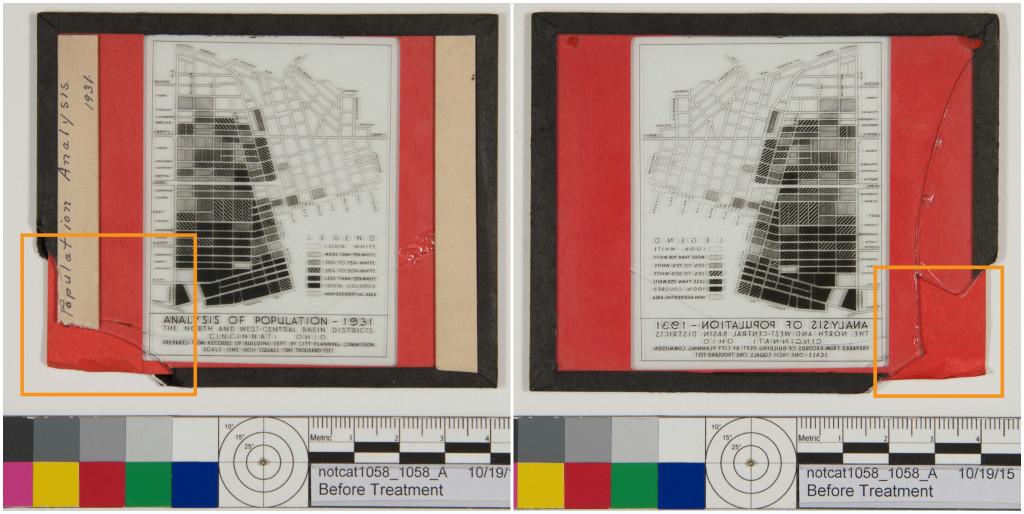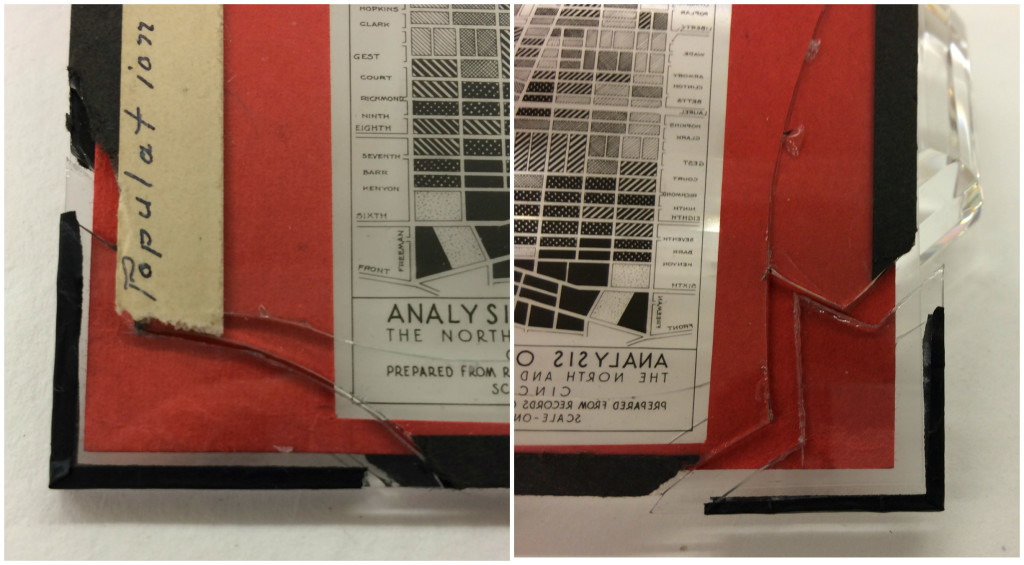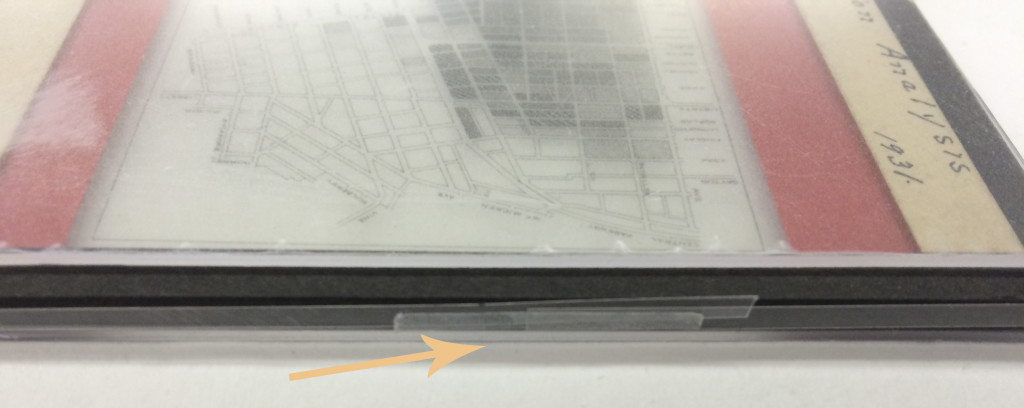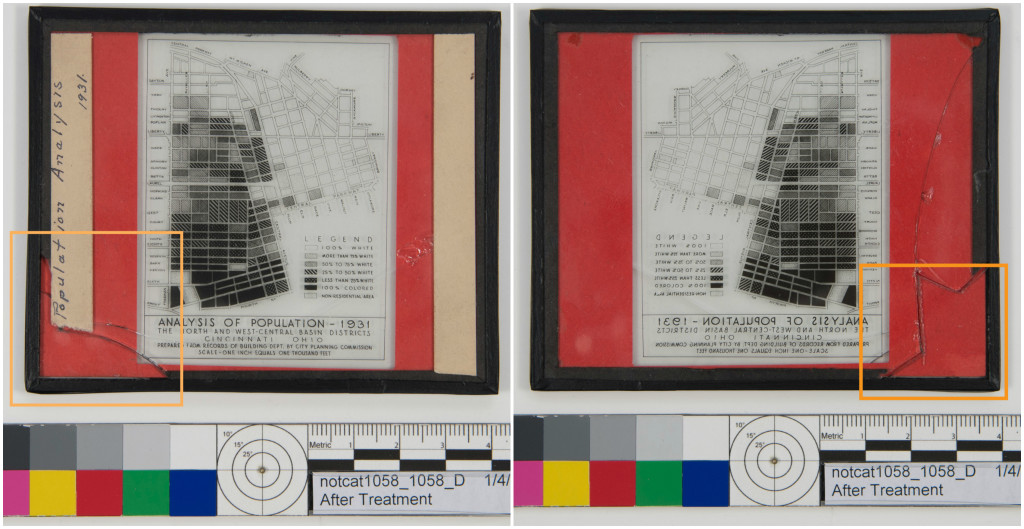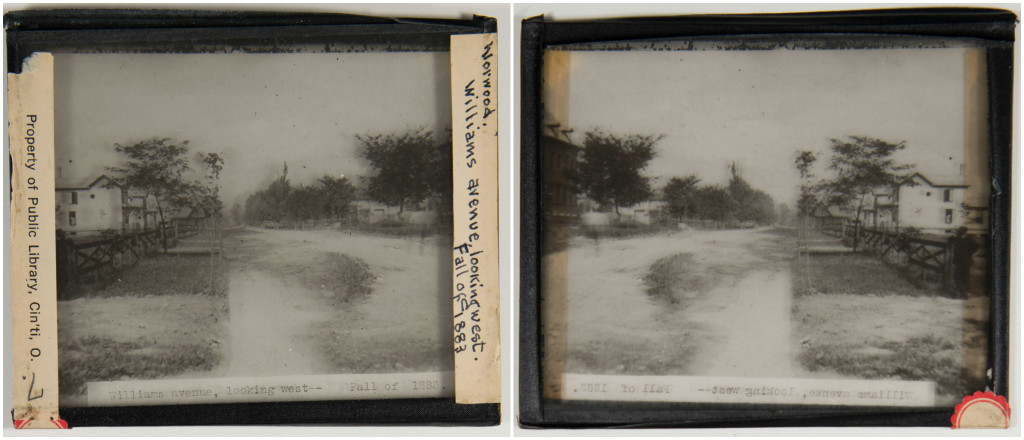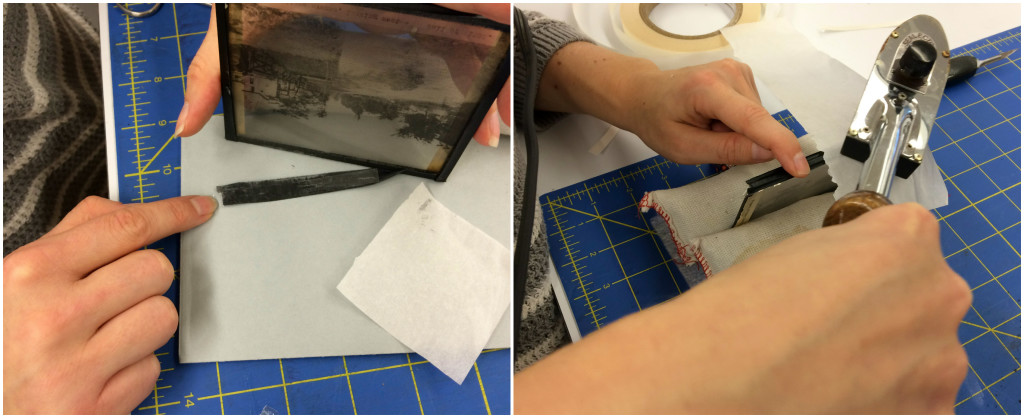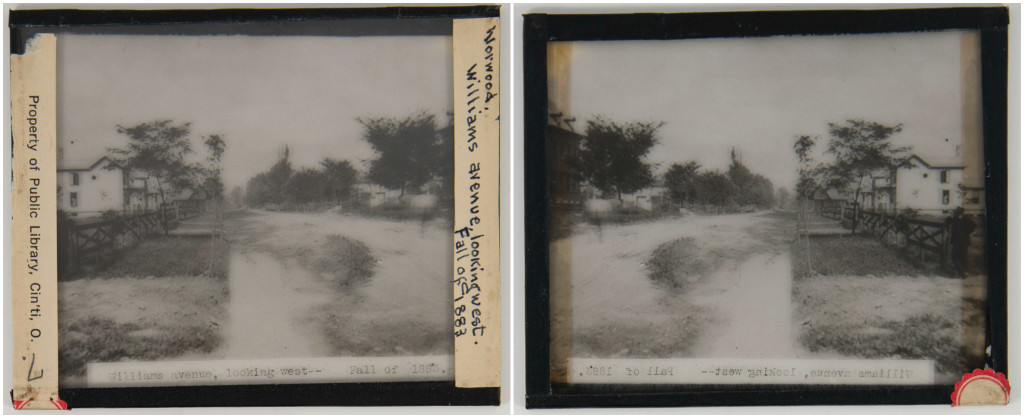Fun with PhotoDoc – Edition 4

We very recently returned a two volume collection of photographs taken by William S. Porter, known as the W.S. Porter Collection, to the Public Library. William S. Porter is known in Cincinnati as one of the two photographers responsible for the 1848 Cincinnati Panorama (you can read more about and even explore this amazing daguerreotype panorama here). Volume one of the collection consists of 7 cased photographs (including daguerreotypes, ambrotypes, and tintypes) and 1 non-cased tintype, all reportedly taken by W.S. Porter, while volume 2 consists of one framed daguerreotype of W.S. Porter and a preservation print of that photograph. When these photographs arrived in the Lab for treatment, many of the cases were damaged (especially along the spine – some broken completely, one previously “repaired” with tape, etc.), the framed photograph needed re-packaging, and the collection needed two custom enclosures (vol. 1 & 2) to safely store all the photographs.
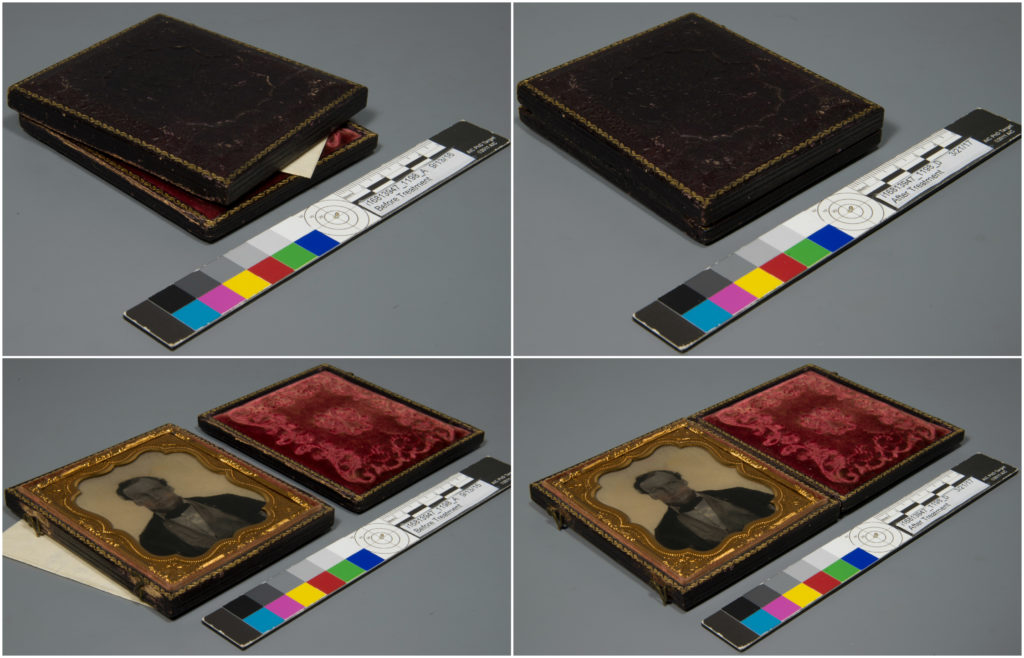
Now, as anyone who does photographic documentation will tell you, taking treatment documentation photos of photographs is a pain, especially on the copy stand (i.e. from above) and especially when you were trained in-house in a book and paper lab. Glass objects just aren’t as common around these parts. During PhotoDoc glass just acts as a mirror, reflecting all your light and even your camera lens and obstructing the actual photograph you are trying to capture. But we knew that we wanted some good quality photos of the photographs to print as surrogates and to also use in the enclosures. Black foam core and an Olfa rotary cutter to the rescue! Using these two supplies I created a non-reflective black surface to place around the camera lens to help reduce reflections and absorb light.
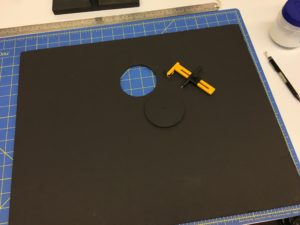

With the black non-reflective board in place, I was able, with guidance from our conservator, to get some pretty good shots of the photographs to be used as surrogates. The photos were also printed out and attached to the back of individual tuxedo boxes for each cased photograph. Instructions to “store face down” were placed on the front of each tuxedo box to assist patrons in proper storage. (The glass on all of these photographs is degraded and if stored face up the glass can actually weep onto the photograph causing significant damage, therefore cased daguerreotypes/ambrotypes/tintypes are generally stored up-side-down to prevent further damage to the actual photograph). All of the tuxedo boxes for volume 1 were housed within a two-tiered clamshell box with two removable trays made by our resident “Box Master”, Chris Voynovich. It should be noted that it’s a miracle this enclosure made it out of the lab and back to the Public Library, because several staff members were so enamored with it and thought it would make the best jewelry box! I mean, it kind of would, wouldn’t it?
Here are the images I was able to obtain using my homemade non-reflective board:
Jessica Ebert (UCL) – Conservation Technician
